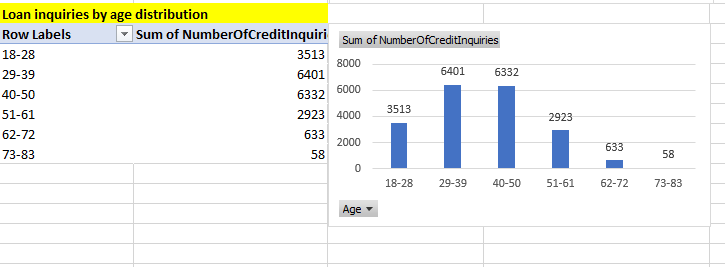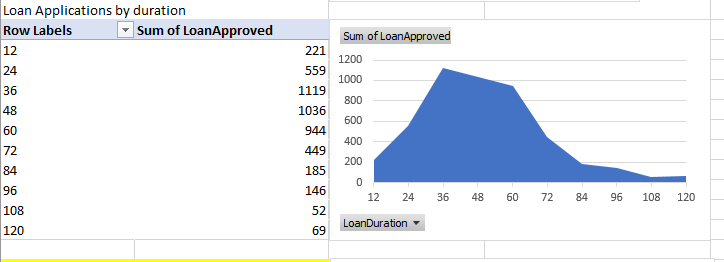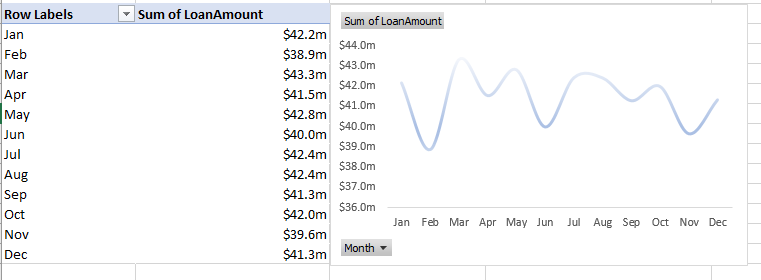Co-Operative Loan Report

Table of contents
- Project brief
- Objective
- Key Questions to Answer
- Data source
- Tools
- Dashboard design charts
- Stages
- Data Cleaning Process
- Insights
- Recommendations
Project Brief:
Cooperative Loan Analysis
Objectives
The aim of this dataset is to provide detailed information on loan applications submitted to a co-operative financial institution. It includes applicant demographics, loan details, and approval status, allowing for a comprehensive analysis of trends, customer behavior, and business performance.
-
Analyze Loan Applications Across Demographics: Examine how age, marital status, education, and employment status influence loan application volume and approval rates.
-
Identify High-Value Customer Segments: Discover which groups (e.g. age, education level) are associated with higher loan amounts and better approval chances.
-
Understand Monthly Loan Trends: Track loan funding performance across different months to identify peak and low-performing periods.
-
Explore Loan Purpose Distribution: Determine the most common reasons customers request loans and analyze the funding associated with each category.
-
Assess Loan Term Preferences: Review preferred repayment terms among applicants to help design better loan products.
-
Support Data-Driven Decision Making: Provide actionable insights to help the organization optimize loan products, marketing efforts, and risk management.
Key Questions to Answer
-
In which months was loan funding highest and lowest?
-
What is the total loan applications, funded amount and monthly payment.
-
Is there a consistent trend in loan funding across the year?
-
Are there any seasonal patterns in loan demand?
-
Which age group submits the most loan applications?
-
Which age group gets the most loan approvals?
-
How does marital status affect the number of loan applications?
-
Do younger applicants (under 30) get loans approved as often as older ones?
-
Which education level accounts for the highest loan amount?
-
Are loan applications correlated with the level of education?
-
Which employment group (employed, self-employed, unemployed) requests the most loan funding?
-
Is there a risk in the high loan volume from unemployed applicants?
Data Source
Tools
| Excel | Cleaning, Processing, Pivot Tables |
Dashboard Mockup
Process of which the dashboard was designed
Stages
- Get data from source
- Load into Excel spreadsheet
- Clean and Process using functions, formulas and Pivot tables.
- Build Dynamic Dashboard using Charts
Processing
Insights
• Age Group: Applicants aged 30–50 dominate loan applications and approvals.
• Education Level: Individuals with Bachelor’s and Master’s degrees apply for the highest loan amounts.
• Loan Approvals: Most approvals go to applicants between 30–50 years old.
• Monthly Trend: Loan funding peaks around March, July, and September; dips in November.
• Marital Status: Married individuals account for 50% of all applications.
• Loan Purpose: Top purposes are auto, debt consolidation, and education.
• Employment: Employed applicants request the highest amount, but unemployed applicants also request large sums.
• Loan Term: Short- to mid-term loans (36–60 months) are most popular.
Recommendations
• Target Ages 30–50: Tailor marketing and loan products toward this active segment.
• Promote Education Loans: Customize student or continuing education loan packages.
• Review Unemployment Risk: High loan requests from unemployed applicants suggest a need for tighter screening.
• Enhance Offers for Married Applicants: Introduce bundled financial services or loyalty programs.
• Flexible Loan Terms: Focus offerings around the popular 36–60 month range.
• Boost Low-Season Activity: Use promotions during lower loan activity months like November.









